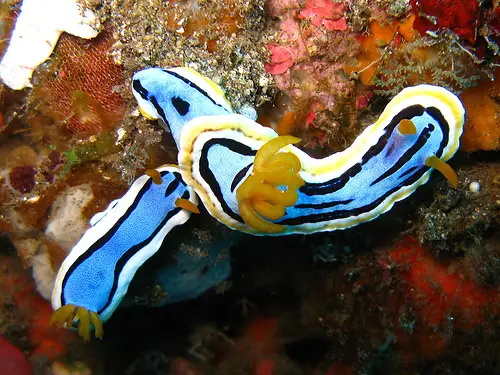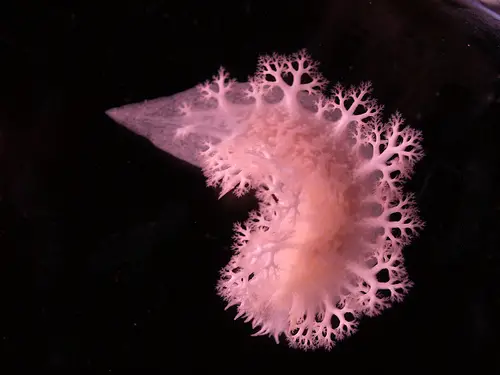Nudibranch
Nudibranch’s are a type of clade that shed their shell after their larval stage. They are a favourite of scuba divers and underwater photographers due to their beautiful and striking colours. There are 3,000 described species of nudibranchs. They are casually called sea slugs, which by the way, is not a scientific term. However, not all “sea slugs” are nudibranchs.
They live at all depths of salt-water, however they reach their greatest size and variation in form and colour in warm, shallow waters. There are numerous body forms of nudibranchs as they are opisthobranchs. Some nudibranch species also have venomous appendanges by their sides to deter predators. However, most nudibranchs just have a simple gust and a mouth with a radula. They do not have a mantle cavity. Their eyes are rather simple, and can only discern light and dark. Their eyes are set into the body and are the size of a quarter of a millimetre in diameter. Its lens has 5 photoreceptors.
In adult form, their size varies between 20 to 600 millimetres. Their adult form does not have a shell or an operculum. Their name is apt as they breathe through naked gill-shaped branchial plumes that are on the back of their tail, rather than its gills. Its head has tentacles which are sensitive to smell, touch, and taste.
These sea creatures are hermaphrodites. However, they can rarely fertilize themselves. In order to fertilize, they deposit their eggs within a gelatinous spiral.
Nudibranches are carnivorous, however their diet varies. Some nudibranches eat sponges, while others eat other sea slugs, while others eat hydroids, and so forth. Other items it may eat include bryozoans, tunuicates, barnacles, anemones, and some members of their own species.
The surface dwelling nudibranch is a predator of siphonophores like the Portuguese Man O’ War. They suck air into its stomach to keep it afloat, and uses its muscular foot to cling onto the surface. If it finds a small victim, it will envelope it with its mouth. However, if it is larger than a siphonophore, then it will eat off its fishing tentacles.
As mentioned above, nudibranchs are colourful sea creatures. Their bodies may resemble the colour and texture of surrounding plants in order for it to be camouflaged. However, some have really bright and intense colours which serve as a warning that they do not taste nice or are poisonous.




